
Puffins are fun, charismatic birds to see and to photograph. With just three species in the world, it is easy to learn more about each type of puffin – horned puffins, tufted puffins, and Atlantic puffins – to better appreciate the uniqueness and capture the distinctive quirks of these engaging birds.
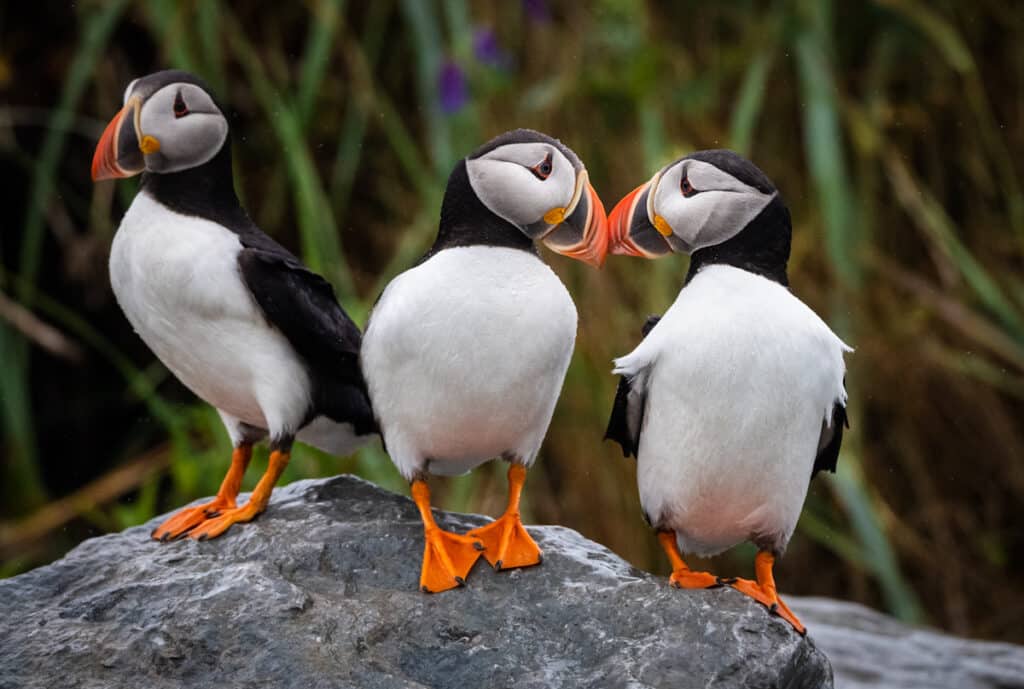
All Puffins
All three puffin species are alcids, members of the bird family Alcidae. This makes them close cousins to auks, auklets, murres, murrelets, guillemots, dovekies, and razorbills. With their upright posture and black-and-white tuxedo-like plumage, these birds are often confused for penguins, but the two types of birds are not closely related – in fact, penguins belong to a completely different family (Sphenicidae). Puffins and penguins are also separated by geography, as puffins are only found in the northern hemisphere, while penguins are mostly confined to the southern hemisphere.
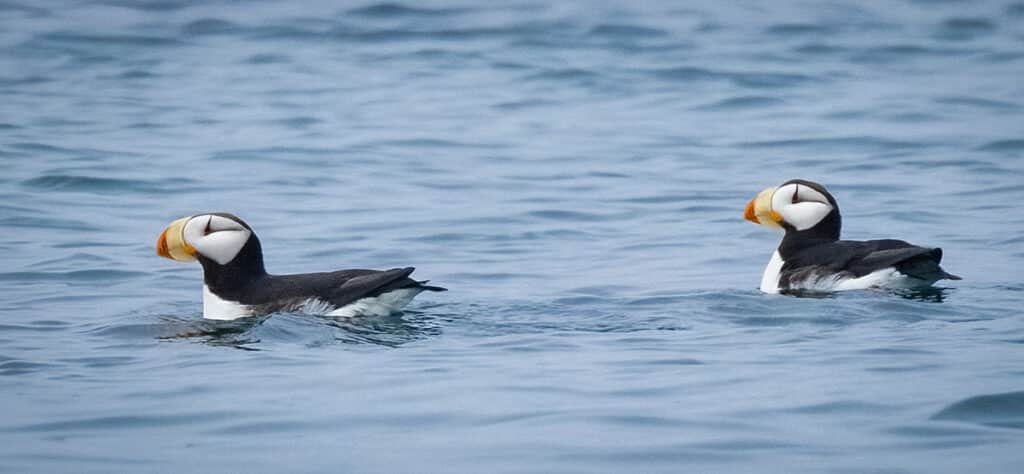
Puffins are pelagic birds, spending much of their lives at sea and resting on the waves. During the breeding season, they visit rocky coastlines, cliffs, and offshore islands to raise their young, and those nesting colonies present ideal photography opportunities. Photographers should be very careful when visiting colonies, however, as the birds’ comfort and safety should always be the primary consideration. Keeping a safe distance and using a long lens is critical to avoid stressing the birds, which could lead to nest abandonment.
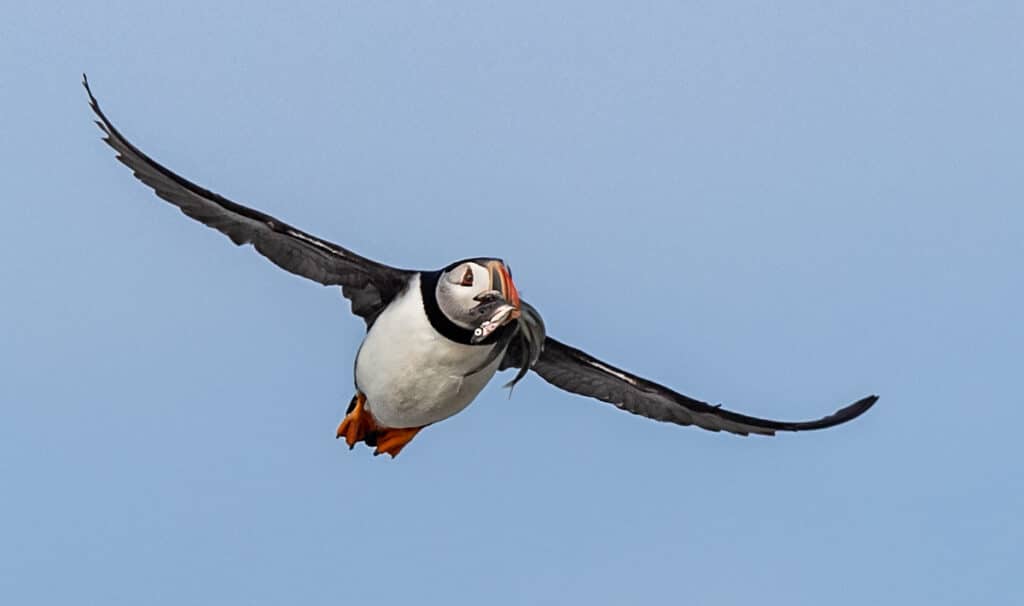
As seabirds, puffins eat a wide variety of small fish. The classic puffin photo of a bird with its colorful bill stuffed with fish is a photographer’s dream shot, particularly during the breeding season when these birds have much more colorful bills. The bright orange, yellow, and cream colors of their bills, as well as their bold facial markings, gives these birds the nickname “sea parrots” or “clowns of the sea” and showing that whimsy is easy when photographers focus on the birds’ face for that ideal shot.
Horned Puffin
The horned puffin (Fratercula corniculata) is the most restricted and least familiar puffin, with a range limited to Alaska and eastern Russia, and only as far south in Asia as Hokkaido in northern Japan.
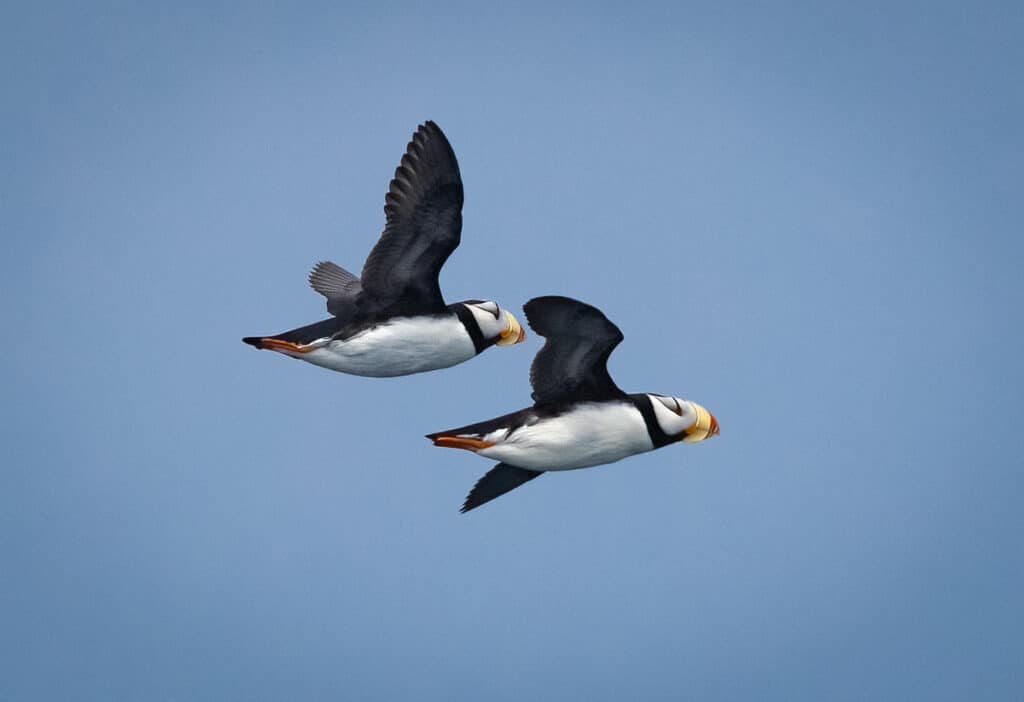
Despite the limited range, however, these birds are immediately recognizable by their chunky bodies, upright posture, and large bills. During the breeding season, the bulk of the bill is a creamy pale yellow, with a red wedge at the tip. The horned puffin’s white face also has clown-like “makeup” markings around the eye, giving the bird a woebegone expression.
In winter, these birds are much plainer, with a smaller, gray-black bill and ashy wash on their face, especially around the eyes.
Tufted Puffin
The tufted puffin (Fratercula cirrhata) is the most widespread of the two Pacific puffins, found as far south as the central California coast and north to Alaska, including the Aleutian Islands. In Asia, these birds are seen along the coast of eastern Russia and south to the Korean peninsula and northern Japan.
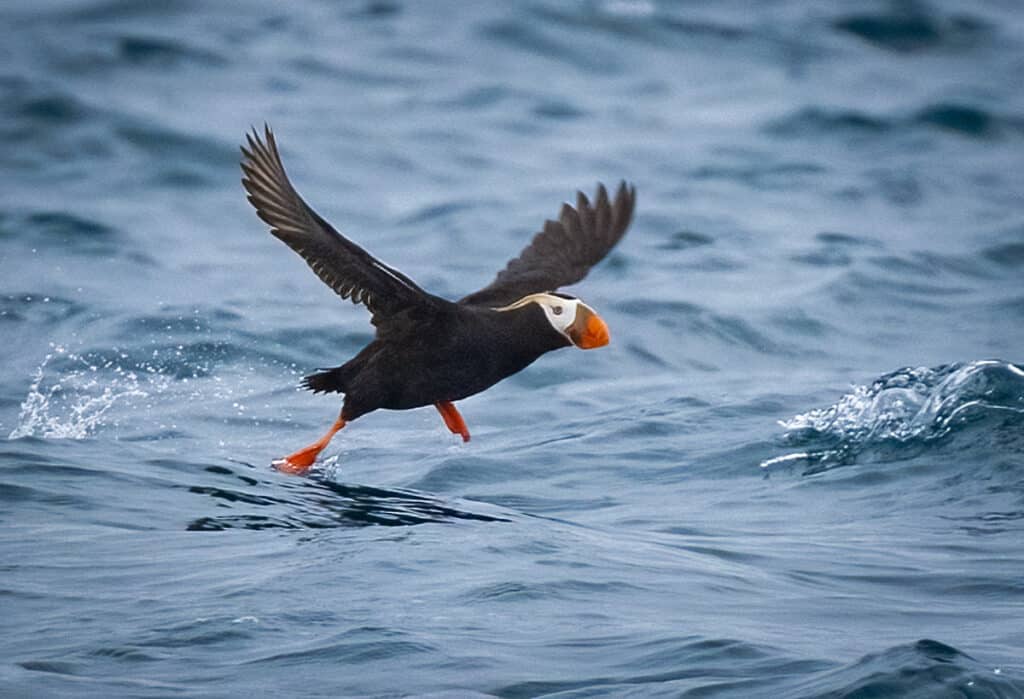
These birds are aptly named for their long, creamy yellow “tufts” that grow from the eyebrows and back along the head during the breeding season. This slick hairdo is a key trait for these birds, and a diagnostic mark for proper identification. Their bodies are black and their face is white, with a large yellow and red bill.
In winter, tufted puffins lose their tufts, and their faces turn black. The red color on their bill vanishes, but they keep the yellow coloration, which easily distinguishes winter tufted puffins from horned puffins.
Atlantic Puffin
The Atlantic puffin (Fratercula arctica) is also known as the common puffin, for good reason. These are the most widespread puffins in the world, and the only species seen in the Atlantic ocean. They can be seen from coastal Maine and New England into Canada, Greenland, Iceland, the British Isles, Scandinavia, and the coast of western Russia.
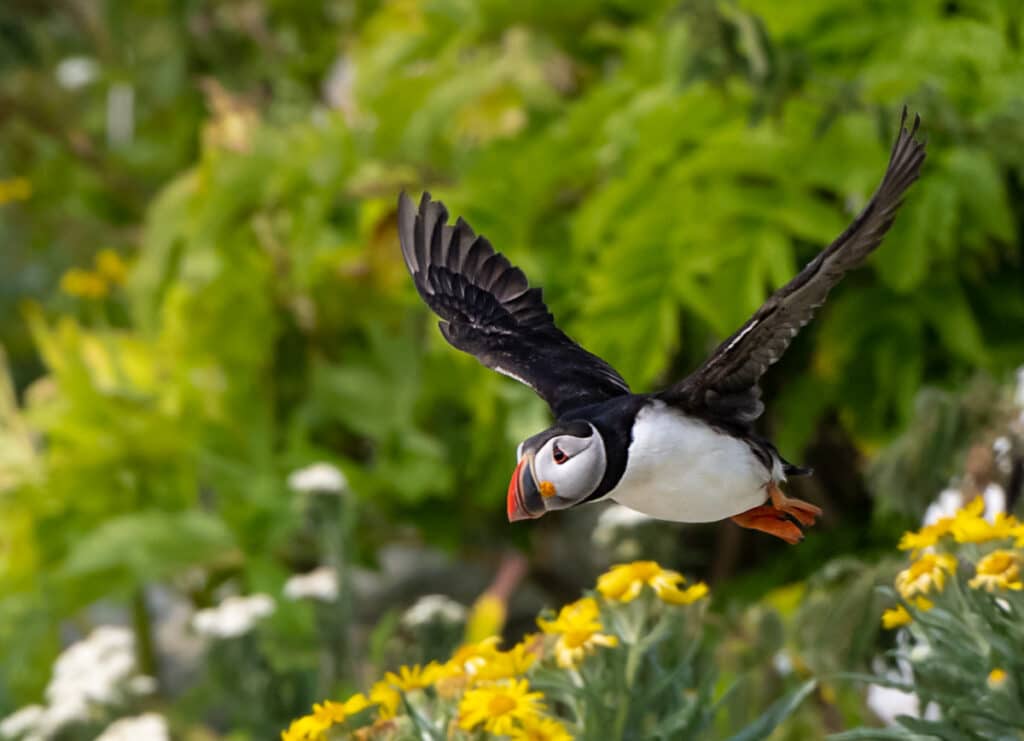
Like their lesser known cousins, Atlantic puffins are easily recognized by their black-and-white plumage, white face, and bold, colorful bills. During the breeding season, these birds have striped bills with yellow, black, and orange, as well as bright orange legs. Their white faces show tear-like lines for a mournful expression.
In winter, Atlantic puffins get much more gray on the face and lose their orange coloration on the bill though retain some creamy yellow tones. Their legs also fade to a dull orange-yellow shade, but they are still easily recognizable as puffins.
Problems for Puffins
While these colorful birds are fun to see and photograph, they may become more challenging to find and capture in years to come. Puffins are threatened by a range of hazards, including overfishing of their feeding grounds, climate change that impacts their food sources, pollution that contaminates their habitat, invasive predators that decimate nesting colonies, and even tourists who startle the birds and make them less apt to care adequately for their nestlings.
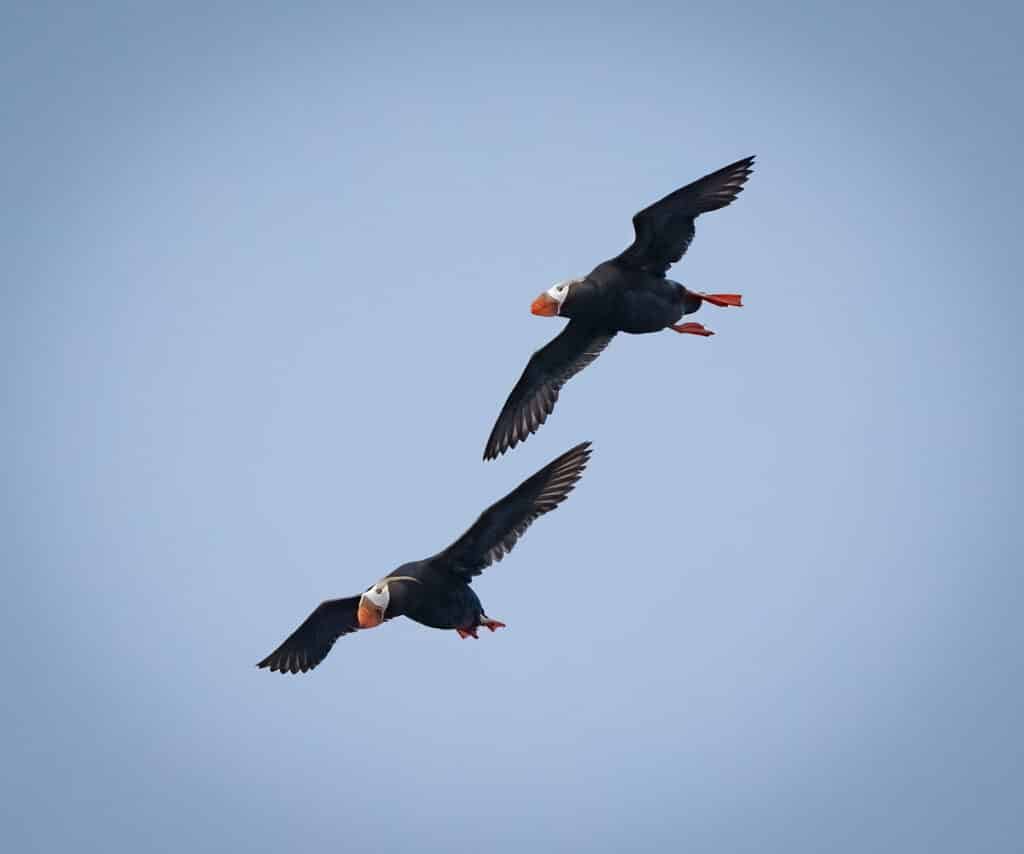
Bird photographers can be a key force in protecting puffins. By taking responsible, intimate photos of these birds, more people can come to know and appreciate puffins. The more people are aware of these birds, the easier it will be to take the necessary steps to protect them and ensure puffins are around to enchant birders, bird photographers, and nature lovers of all kinds for generations to come.


